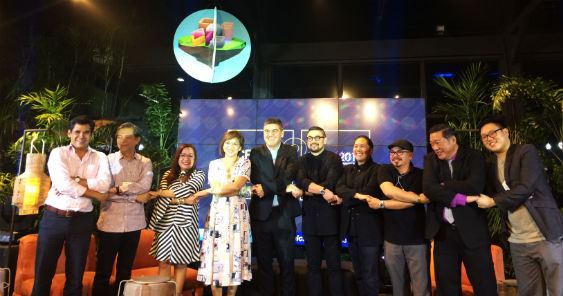The Department of Trade and Industry (DTI) aims to showcase and position the different sectors of the Philippines creative industry as a key driver for economic growth by establishing the country’s first international creative industry trade show. The DTI, through the Center for International Trade Expositions and Missions (CITEM), will hold CREATE Philippines 2017 from October 20-22 concurrently with the 66th Manila FAME at the Philippine Trade and Training Center and HallONE, Pasay City.

CREATE Philippines will serve as an idea hub, pitching event, masterclass venue, and trade fair, highlighting four high-potential creative sectors: advertising content and production, digital games and apps, film and animation, and performing arts.
The event will have three components. The Creative Hub and Talks (CHAT) will be a forum for creative professionals for knowledge sharing. The ARTALIVE exhibition will showcase the Philippines’ creative heritage featuring pre-conquest artistic expressions, contemporary products of creativity, and modern global influences in design, visual communication, music, animation, and film. Lastly, Music Fest will feature performances from homegrown independent and mainstream artists.
Driver of Economic Growth
In the Philippines, the creative industry, which includes sectors like advertising, digital art/graphic design, animation, game development, film, and performing arts, contributed P661B, comprising 7.34% of the country’s total GDP and employed 14.4% of the labor force.
Meanwhile, the creative industry produced 3% of the world’s GDP in 2015, amounting to $2,250B in value.
In a statement, CITEM Executive Director Clayton Tugonon said, “the creative industry has the potential to be an export sector that can support, or even drive the country’s economic growth and sustainability of our creative talents.”
Collaboration for the Philippine creative economy
In a statement, DTI Undersecretary for Trade and Investments Promotion Group Nora Terrado said, “CREATE Philippines will streamline the nation’s long-term goal of developing creative cities in the Philippines under the UNESCO creative cities network. It will accelerate the roadmap for the development of the country’s creative industry as we introduce the Creative Economy Council of the Philippines as the new generation of industry champions.”
The event will also be a collaborative effort between the private and public sectors with institutional partners National Commission for the Culture and the Arts (NCCA), the Board of Investments (BOI), the Design of the Center of the Philippines (DCP), the Cultural Center of the Philippines (CCP), the Philippine Trade and Training Center (PTTC); industry partner Creative Economy Council of the Philippines (CECP); and supporting organisations Game Developers Association of the Philippines (GDAP), Animation Council of the Philippines (ACPI), Association of Accredited Advertising Agencies Philippines (4As), Filscap, Philippine Association of the Record Industry, Inc. (PARI), and PhilPop.
For DCP Executive Director Rhea Matute, CREATE Philippines can be a venue for Filipino designers to collaborate with other artists and making their products viable for business. “We’re hoping with our partnership with CREATE Philippines, as an agency under the government and as a sister agency of CITEM, we want to consolidate efforts and connect the dots with industries, within sectors, and creative industries in general,” she added.
CECP founder Paolo Mercado wants the Philippine creative economy to be 5th in Asia-Pacific and first in the ASEAN region by 2030. The council brings together different creative industry organisations to share ideas on how the Philippines can be an international creative powerhouse. For the CREATE Philippines event, the council is bringing in Filipinos who have been successful outside the country. “There’s not enough perspective of what we can do internationally. What we would like to bring in are people who have succeeded in the international scene,” he said. Yet, Mercado added, the talks should go beyond individual success stories and discuss scalable business models the country’s creative industry can emulate.
The CECP, along with the BOI, has already been working on a roadmap for the Philippine creative economy. BOI’s Paul Edward Tajon has emphasized the BOI’s enabling role in the creation of the roadmap, and that both organisations have identified which sectors have most potential for international growth.
Usec. Terrado added, “as government, we want to provide an environment where the industry will thrive. I’m not saying this is all about money, but there is a soul around building an industry — the soul of helping communities, creating jobs, creating new entrepreneurs, creating the next brand the Philippines will be known for.”
“If we can do it in the IT and BPO sector, we can do it in the services sector,” Terrado rallied.








